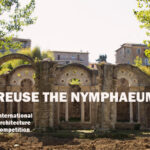Submission: August 31, 2022
Registration: August 31, 2022
Language: English
Location: Global
Prizes: Please see the details below
Type: Open
Enel Global Infrastructure & Networks is looking for a new design concept for a prefabricated secondary substation, which must have innovative features in design, materials, and construction, incorporating the principles of sustainability and, in particular, a circular by design approach. The new design must ensure, both in the technical characteristics and in those of the product, the complete compliance with the technical and safety regulations currently in force for its use and installation, and must take into account the minimum dimensions necessary to house all the equipment normally found inside.
Secondary substations are electrical infrastructures dedicated to the transformation of medium voltage to low voltage, as well as to the control and the protection of the electricity grid and are accessed by Enel’s expert staff. The described Challenge aims to identify an innovative architectural design of a street-level secondary substation that utilizes sustainable materials and improves the integration of the structure in rural and urban contexts, while retaining existing functionality.
Enel is committed to a sustainable business model, with a marked acceleration on decarbonization that foresees becoming zero-carbon by 2040. This approach is adopted by all the Group’s businesses and leverages the circular economy as the way to boost Net Zero through sustainable materials, modularity to extend useful life, and circular processes across and beyond the value chain, starting from the design and procurement phases up to production and end-of-life management. To maximize value creation and to ensure full implementation of each solution, a sustainable by design approach must be applied. This means starting from context analysis and from the identification of all solutions that avoid or minimize environmental and social impact, in order to guide the design of the new prefabricated secondary substations.
The use of prefabricated secondary substations follows daily and ordinary activities that require internal interventions and inspections to be performed only by competent Enel personnel, in order to check the structure, and verify its integrity in the event of accidental impacts or any tampering. For the safety of Enel specialist personnel and third parties such as pedestrians, the secondary substation must comply with specific safety conditions.
The respective dimensions of the internal components that must be installed and maneuvered are highlighted but determining the layout of these components is not within the scope of this Challenge.
The purpose of this Challenge is the creation of new sustainable architectural concepts dedicated to secondary substations. The primary goal of the Challenge is the creation of an innovative sustainable architectonic modular system that allows a high degree of versatility, which is a necessary requirement to adapt the buildings and architectural elements to the different contexts of use present in the area.
The primary objectives are:
- To promote a positive visual impact of these infrastructures that improves their insertion in the local area, favoring a more harmonious dialogue with the natural environment of the places where they are located.
- To provide the prefabricated substations with new quality and innovation based on project research.
- To be the symbol of a new vision of energy that the Company promotes and communicates: more participatory, bidirectional, sustainable, and enhances a closer relationship between the Company and customers. Provide for the possibility of conveying messages addressed to customers or to the various stakeholders of the Company.
- Economic feasibility.
- To integrate the circular perspective into the design with the aim of ensuring asset longevity, encouraging modularity and therefore component replacement and maintenance, as well as recycling/reuse of cabin materials at end of life. Key drivers of a circular by design approach include:
- Product Structure/Architecture: reduce the number of components relative to the main functionality required and adopt a design that facilitates the removal of hazardous materials.
- Components: use durable components and avoid hazardous materials.
- Renewable Energy: include renewable energy sources for internal use.
- Materials: as much as possible, select recyclable/recycled and energy-efficient materials and minimize the variability of materials used. Incorporating recycled materials in the design would be preferable. In particular, the use of most sustainable alternatives to traditional reinforced concrete would be the best option (including clinker replacement materials, recycled concrete, bio concrete).
- Design for dismantling: the component must be designed to facilitate disassembly and recovery of all materials at the end of its life.
The jury that will evaluate the proposal will include representatives of EGI&N and a number of high-level personalities from universities, institutions, and the design and architecture field.
Awards
Applicant selected as winner of the Challenge: an amount of 30,000 euros.
Applicants who will be selected for the conclusion of option award: an amount of 7,000 euros.
DEADLINE
Submissions to this Challenge must be received by 11:59 PM (Central European Time) on August 31, 2022.
Late submissions will not be considered.








